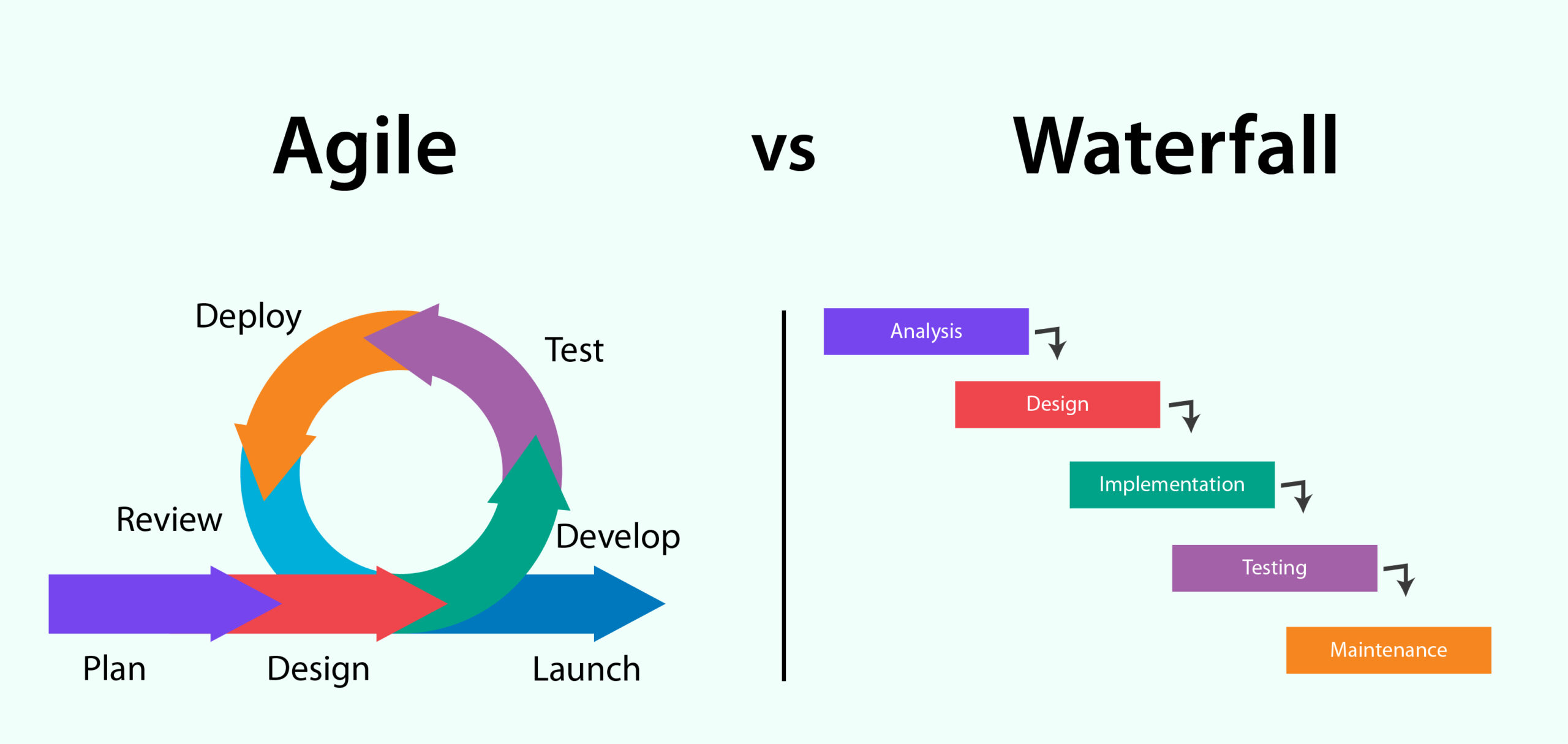Many software development projects fall behind schedule or fail to meet customer expectations because traditional project management methods are too rigid.
When teams can’t adapt quickly to feedback or changes, projects become prone to delays and cost overruns. This often leads to products that don’t fully satisfy customer needs, causing frustration all around.
The Agile Manifesto introduces a much-needed shift in project management. This approach focuses on flexibility, teamwork, and customer involvement. By emphasizing effective communication, quick project iterations, and continuous input, the Agile Manifesto helps teams stay responsive and efficient. Let’s explore how adopting these principles can dramatically improve your project outcomes and keep your team competitive in today’s software development landscape.
What is the Agile Manifesto?
The Agile Manifesto, crafted in 2001 by seventeen innovators, emphasizes flexibility and customer value in software development. Central to Agile methodology, the Agile Manifesto advocates adaptive planning and evolutionary development. It prioritizes working software and responsive change management, distinguishing Agile methodology from traditional models.
Agile manifesto remains a cornerstone in Agile methodology, guiding developers in achieving higher productivity and better meeting customer needs. Through the Agile Manifesto, the approach transforms complex software development into more manageable, incremental processes.
In simple words, the Agile Manifesto replaces conventional software development approaches, built on 4 values and 12 principles for Agile software development.
The Agile Manifesto fosters collaboration among team members and stakeholders, ensuring dynamic progress and continual improvement. By incorporating the Agile Manifesto’s principles, teams can efficiently handle changing priorities and enhance project outcomes.
Four Values of the Agile Manifesto
The core of the Agile Manifesto, pivotal in reshaping the software development process, is articulated through four fundamental values:
1. Individuals and interactions over processes and tools:
The Agile Manifesto emphasizes team collaboration and direct customer interaction above strict adherence to tools and processes. It advocates for the importance of human elements and personal communication, believing that the best outcomes arise from teams that work well together and engage frequently with stakeholders.
2. Working software over comprehensive documentation:
The Agile Manifesto focuses on the delivery of functional software while minimizing the importance of exhaustive documentation. This value supports the idea that tangible software results are more beneficial to clients than extensive paperwork, allowing teams to streamline their efforts and focus more on product development and user satisfaction.
3. Customer collaboration over contract negotiation:
The Agile Manifesto advocates for ongoing feedback and cooperation with customers rather than strict compliance with contractual terms. This approach fosters a more flexible and adaptive development environment, where customer needs and feedback directly influence the ongoing development process, leading to more tailored and effective software solutions.
4. Responding to change over following a plan:
The Agile Manifesto values adapting to evolving project requirements over adhering rigidly to a predefined plan. It promotes agility and flexibility, recognizing that in a fast-changing technological landscape, the ability to pivot and embrace changes can lead to more innovative and appropriate software solutions.
12 Agile Manifesto Principles
The twelve principles of the Agile Manifesto expand upon the values by offering specific guidelines aimed at enhancing the software development process:
1. Our highest priority is to satisfy the customer through early and continuous delivery of valuable software
This principle of the Agile Manifesto ensures that customer satisfaction is always at the forefront, achieved by regular updates and improvements in software functionality.
2. Welcome changing requirements, even late in development
The Agile Manifesto values flexibility, encouraging teams to embrace changes at any stage of the development process to better meet customer needs.
3. Deliver working software frequently, from a couple of weeks to a couple of months, with a preference for the shorter timescale
Consistent with the Agile Manifesto, this principle emphasizes the importance of short development cycles that enhance productivity and ensure quick feedback.
4. Business people and developers must work together daily throughout the project
The Agile Manifesto advocates for continuous collaboration between business stakeholders and developers to align the development process with business goals and customer expectations.
5. Build projects around motivated individuals. Give them the environment and support they need, and trust them to get the job done
The Agile Manifesto recognizes the significance of empowering team members, ensuring they have the right environment and support to succeed.
6. The most efficient and effective method of conveying information to and within a development team is face-to-face conversation
This principle from the Agile Manifesto highlights the value of direct communication, which fosters clear and quick resolution of issues and alignment of objectives.
7. Working software is the primary measure of progress
Aligning with the Agile Manifesto, this guideline asserts that tangible, operational software is the most reliable indicator of development progress.
8. Agile processes promote sustainable development. The sponsors, developers, and users should be able to maintain a constant pace indefinitely
The Agile Manifesto supports a balanced workflow that avoids burnout, ensuring all participants can contribute effectively over the long term.
9. Continuous attention to technical excellence and good design enhances agility
According to the Agile Manifesto, prioritizing technical excellence and smart design improves adaptability and results in higher quality products.
10. Simplicity—the art of maximizing the amount of work not done—is essential
This principle of the Agile Manifesto advocates for simplicity, focusing on what is essential to deliver value efficiently.
11. The best architectures, requirements, and designs emerge from self-organizing teams
The Agile Manifesto promotes autonomy and believes that self-organizing teams are more likely to innovate and optimize solutions.
12. At regular intervals, the team reflects on how to become more effective, then tunes and adjusts its behavior accordingly
True to the Agile Manifesto, this principle emphasizes the importance of continuous improvement, allowing teams to evolve and enhance their processes regularly.
The History of the Agile Manifesto and Its Development
The Agile Manifesto originated from the need to address the limitations of the traditional, cumbersome software development methodologies common in the 1990s. These methods were characterized by heavy documentation and slow, procedural approaches that often delayed delivery and stifled innovation.
In February 2001, seventeen software developers gathered at The Lodge at Snowbird ski resort in Utah, united by their shared frustrations with these outdated practices. This group, which included pioneers like Kent Beck, Jeff Sutherland, and Ken Schwaber, sought to create a more flexible and efficient framework for software development.
Their collaboration over this short retreat led to the creation of the Agile Manifesto, which articulated a revolutionary approach focused on customer collaboration, responsiveness to change, and the prioritization of individuals and interactions over rigid processes.
The Agile Manifesto marked a significant shift in software development philosophy, emphasizing adaptability and streamlined practices that cater to dynamic project requirements and aim to deliver value more effectively.
Application of the Agile Manifesto
Applying the Agile Manifesto entails infusing its values and principles into everyday development methodologies. This encompasses conducting frequent stand-up meetings for transparent communication, implementing short sprints to focus on achievable goals, and embracing iterative development for ongoing refinement.
Teams prioritize continuous feedback loops with stakeholders, ensuring alignment with evolving requirements and fostering a customer-centric approach. By emphasizing collaboration, adaptability, and delivering working software incrementally, teams embody the essence of the Agile Manifesto.
These practices cultivate an environment where change is embraced as a natural part of the process, leading to increased productivity, enhanced product quality, and greater customer satisfaction.
Ultimately, the Agile Manifesto serves as a guiding philosophy that empowers teams to navigate complex development challenges with agility and responsiveness, resulting in successful outcomes and valuable software solutions.
How to use the Agile Manifesto
To utilize the Agile Manifesto effectively, teams must fully embrace its values and principles. This involves cultivating a culture centered on transparency, collaboration, and continuous learning. Individuals are empowered to make decisions, experiment, and adapt based on feedback.
By prioritizing customer collaboration, responsiveness to change, and iterative development, teams embody the essence of the Agile Manifesto. This approach fosters a dynamic environment where teams can efficiently deliver value and respond to evolving requirements.
By adhering to the Agile Manifesto’s ethos, teams can navigate complex challenges with agility and achieve successful outcomes.
Agile vs. Waterfall: Differences and Similarities

Agile and Waterfall methodologies stand as contrasting approaches in project management. Waterfall adopts a linear, sequential path with clear-cut phases (requirements, design, implementation, testing, deployment), while Agile embraces an iterative, incremental process focused on flexibility, customer feedback, and adaptive planning.
Each methodology has its strengths and weaknesses, and the selection between them hinges on factors like project scope, complexity, and customer engagement. Waterfall offers predictability and structured planning but lacks adaptability to change. In contrast, Agile provides flexibility and responsiveness, but may require more active customer involvement.
Understanding these differences enables project managers to make informed decisions tailored to the specific needs and constraints of their projects.
For a detailed comparison between Agile vs Waterfall methodologies, be sure to check out our blog.
Why is the Agile Manifesto Important?
The Agile Manifesto holds significant importance as it outlines fundamental principles guiding modern software development. Rooted in agility, collaboration, and adaptability, it revolutionizes traditional methodologies by prioritizing customer satisfaction, iterative progress, and responsive planning over rigid processes.
Its relevance persists in today’s fast-paced business landscape, offering a blueprint for navigating uncertainties and delivering value efficiently. By embracing the Agile Manifesto’s ethos, teams foster innovation, streamline workflows, and ensure alignment with evolving customer needs. Moreover, its emphasis on continuous improvement fosters a culture of learning and adaptation, empowering teams to respond effectively to changing market dynamics.
Ultimately, the Agile Manifesto serves as a beacon for organizations seeking to thrive in an ever-evolving digital ecosystem, providing a framework that promotes resilience, innovation, and customer-centricity.
Start Your Agile Development With Zaigo Infotech
Since the Agile Manifesto prioritizes client needs, it has become the cornerstone of every project. Agile methodology, initially adopted by the software sector, now permeates diverse industries like manufacturing, marketing, healthcare, and finance. By emphasizing collaboration, flexibility, and iterative progress, Agile empowers teams to meet evolving customer demands efficiently.
At Zaigo Infotech, a software development company with over 9+ years in the industry, we’ve embraced the Agile Manifesto’s client-centric approach. Our track record of completing over 800 projects across 15 sectors in India showcases our commitment to delivering top-notch software products. For a closer look at how our agile approach has led to success, check out our software development case studies. We excel in working closely with clients, adapting plans seamlessly, and ensuring clarity for all involved, making Agile the cornerstone of our successful project deliveries.






